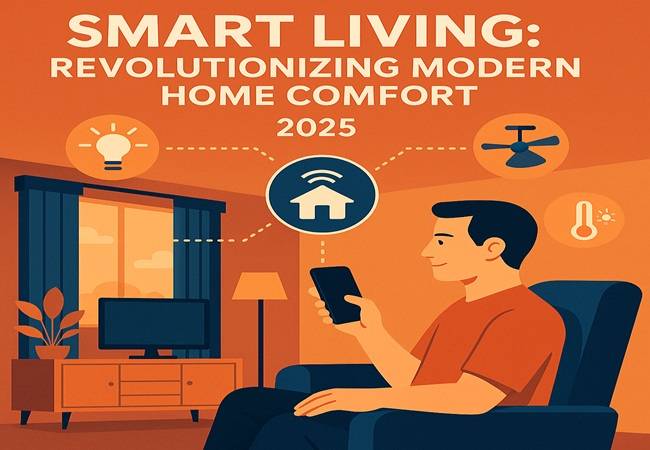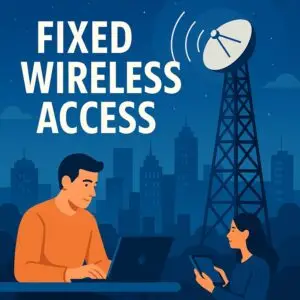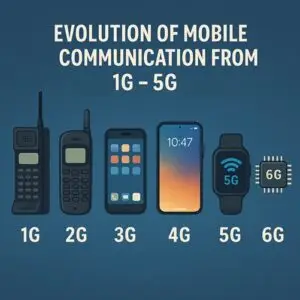Smart Living Made Simple:
How Technology is Revolutionizing
Modern Homes
Imagine starting your morning with a single voice command that turns on the lights and opens the curtains—this isn’t a dream anymore; it’s the reality of smart living today. Modern homes are evolving. With the rise of home automation and connected technology, smart living is becoming the new standard of comfort, safety, and control. Whether you’re in a city apartment or a family house in the suburbs, automated home systems can transform how you experience everyday life.
Table of Contents
Everyday Benefits of Automation
From morning routines that adjust lighting and temperature to remote control of curtains and appliances, smart living brings peace of mind and convenience. In tech-forward cities and growing urban areas—including places like Pakistan—more homeowners are discovering how intelligent home solutions can simplify their daily routines.
Seamless Device Communication
A connected home is a space where devices work together effortlessly. Lights, curtains, fans, and sensors communicate with each other and respond to your commands—via a smartphone, voice assistant, or even automatically based on time or motion. You can enjoy all its benefits without needing any technical knowledge. Most systems today are designed with ease of use in mind.
The Smart Home Brain
The brain behind these systems is often a small device known as a hub. The central hub enables seamless interaction between multiple smart devices. In places where internet reliability can vary, companies like MTronic offer hubs that continue functioning offline. These systems ensure your automated scenes—like turning on the hallway lights at night—still run even when your internet is down. Several companies provide hubs in a variety of form factors, including sleek panels and convenient desktop designs.
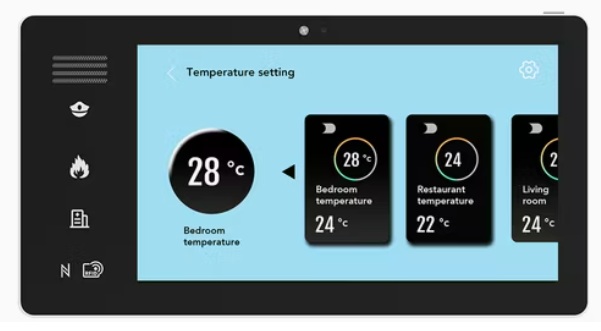
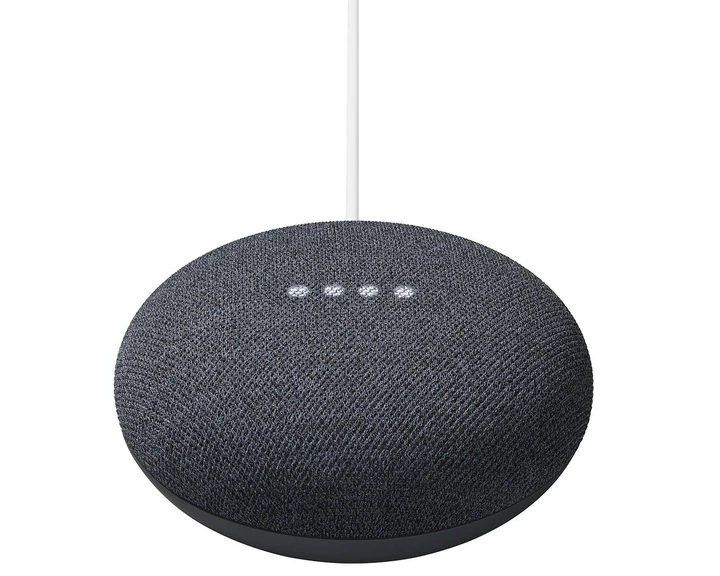
The Sensors
An intelligent home uses sensors to make decisions. These sensors can detect movement, temperature, moisture, or door activity. A hallway light can turn on automatically when motion is detected. Your air conditioning can adjust when the temperature rises. And a water leak sensor under the sink can send an alert before damage spreads. This is more than convenience—it’s smart safety.
- Motion Sensors – Switch on hallway lights as you pass by.
- Door/Window Sensors – Notify you when someone opens a door or window.
- Temperature and Humidity Sensors – Help regulate air conditioning or heating.
- Water Leak Sensors – Send alerts if water is detected near sinks or bathrooms.
These features not only enhance convenience but also add an important layer of safety—especially for families with kids, elderly members, or frequent travelers.

Smart Switches
Controlling lights and fans is now easier than ever with touch wall switches and wireless controls. Touch panels look stylish and are simple to use. Wireless switches give you even more freedom—you can place them anywhere, like on a table, near your bed, or in the kitchen.
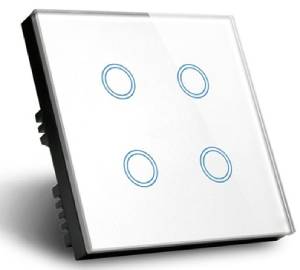
Smart Curtains and Blinds
Another Favorite feature in tech-enabled homes is motorized window coverings. Imagine your curtains gliding open as you wake up, or roller blinds lowering automatically when the afternoon sun gets strong. This feature isn’t just for aesthetics—it helps regulate indoor temperature, saves energy, and improves your sleep schedule. In urban apartments or modern villas, automated curtains are becoming a key part of smart living.

Intelligent Cameras with AI Recognition
Smart living in 2025 is also being defined by advanced security solutions, with AI-powered smart cameras taking center stage. These modern cameras now support local facial and gesture recognition, allowing them to detect familiar faces, unexpected visitors, or specific hand signals. In case of emergencies—such as detecting an unfamiliar face at odd hours or a distress gesture—they can instantly send alerts or messages to your smartphone or emergency contacts. By processing data locally, these cameras maintain user privacy while ensuring faster response times without relying solely on cloud services.
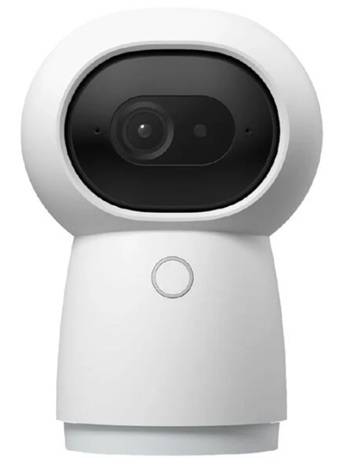
Remote Access and Control
Remote home management is where smart living truly shines. Even if you’re traveling, working late, or out running errands, your connected home is still in your hands. You can use your phone to turn off forgotten appliances, receive updates about security, or even set the mood before you walk through the door. Having this level of control adds convenience and a sense of security to everyday routines.
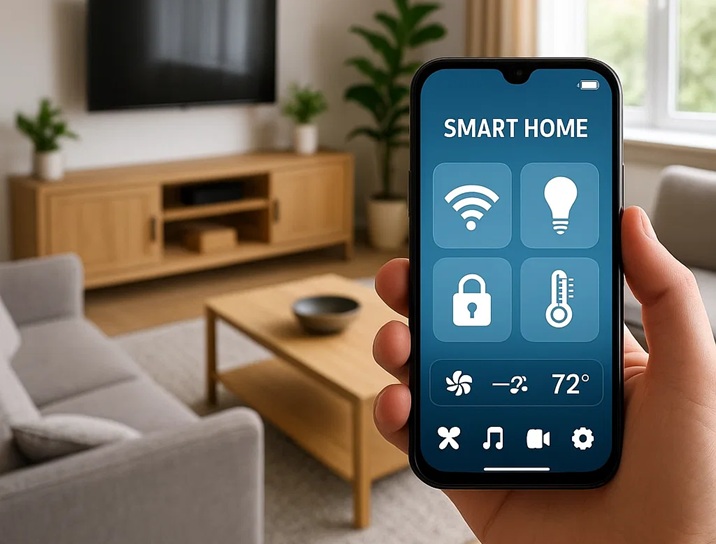
Scalable Smart Solutions
One of the best parts about adopting modern home technology is how flexible it is. You can start small—add one wireless switch, automate one curtain, or try a motion sensor. As you grow more confident, you can add more devices, create scenes like “movie night” or “bedtime mode,” and truly personalize your living space.
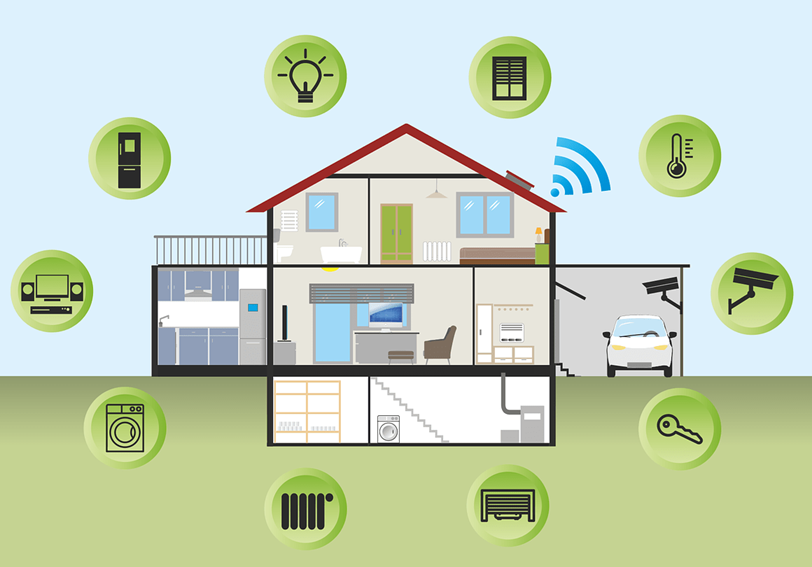
A Smarter Way to Live
Tech-enabled living is more than a convenience—it’s a lifestyle. It simplifies routines, enhances security, and promotes energy efficiency. Whether you’re building a new home or upgrading an existing one, smart living offers solutions that can scale with your needs.
Smart Home Connectivity
In a typical smart home setup, sensors and smart switches communicate wirelessly using low-power protocols like Zigbee or Bluetooth. These devices connect to a central smart hub, which acts as the brain of the system. The hub then links to your home network (WiFi Router) via Wi-Fi or an Ethernet cable (For more details you can read our informational blog How to Choose WiFi Router in Pakistan and How to Optimize Wi-Fi Networks Performance at Home/office ), allowing you to control all devices remotely through a smartphone app or voice assistant. At the same time, Hub Sync with voice assistants like Alexa or Siri.
To ensure reliable remote control and automation, a stable internet connection is essential—whether you’re using GPON (fiber-based-Click here to review our blog about Fast Internet) or FWA (You can also view our blog about Fixed Wireless Access), uninterrupted connectivity is key to keeping your smart home responsive and efficient. This layered connectivity ensures smooth, real-time communication between devices while keeping the network organized and efficient.
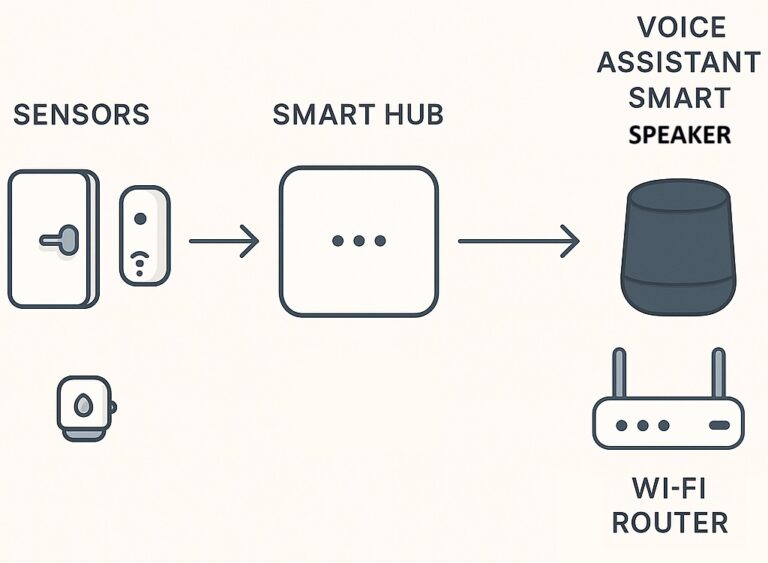
Seamless Compatibility Across Ecosystems
Today’s smart devices are designed to work effortlessly across various platforms, making home automation more accessible than ever. Most smart home solutions now support wide compatibility with Matter, Alexa, Google Home, Apple HomeKit, and Samsung SmartThings. This unified support allows homeowners to integrate products from different brands into a single, cohesive system—ensuring convenience, flexibility, and a smooth user experience regardless of the platform they prefer.
Smart Home Security Challenges
While smart homes offer remarkable convenience, they also pose several security risks. Devices connected to the internet can be vulnerable to hacking, especially if users rely on weak or default passwords. Personal data collected by smart devices may be exposed if not properly encrypted, raising privacy concerns. Insecure or outdated devices, especially budget models, often lack essential security features. If one device is compromised, the entire home network could be at risk. Voice assistants can also be unintentionally activated or exploited, and third-party apps may introduce vulnerabilities if not well-developed or monitored.
Smart Living Safely: How to Stay Secure
To protect your smart home, it’s essential to follow good cybersecurity practices. Change all default login credentials and use strong, unique passwords. Keep device firmware and mobile apps updated regularly. Enable two-factor authentication where possible and use a secure Wi-Fi network—ideally, a separate one for smart devices. Choose reputable brands that prioritize data protection and avoid installing unverified third-party apps. By taking these precautions, homeowners can enjoy the benefits of smart living without compromising their privacy or security.
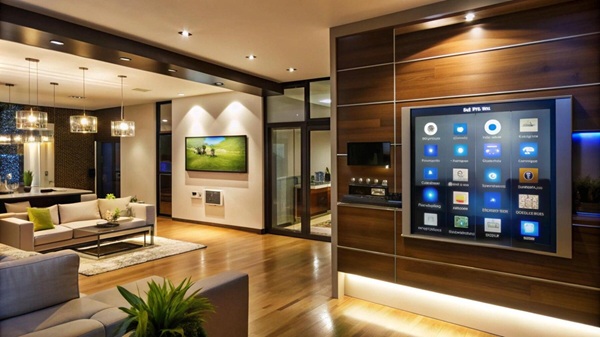
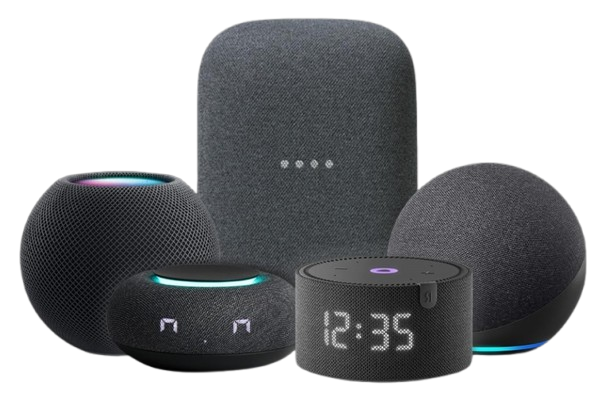
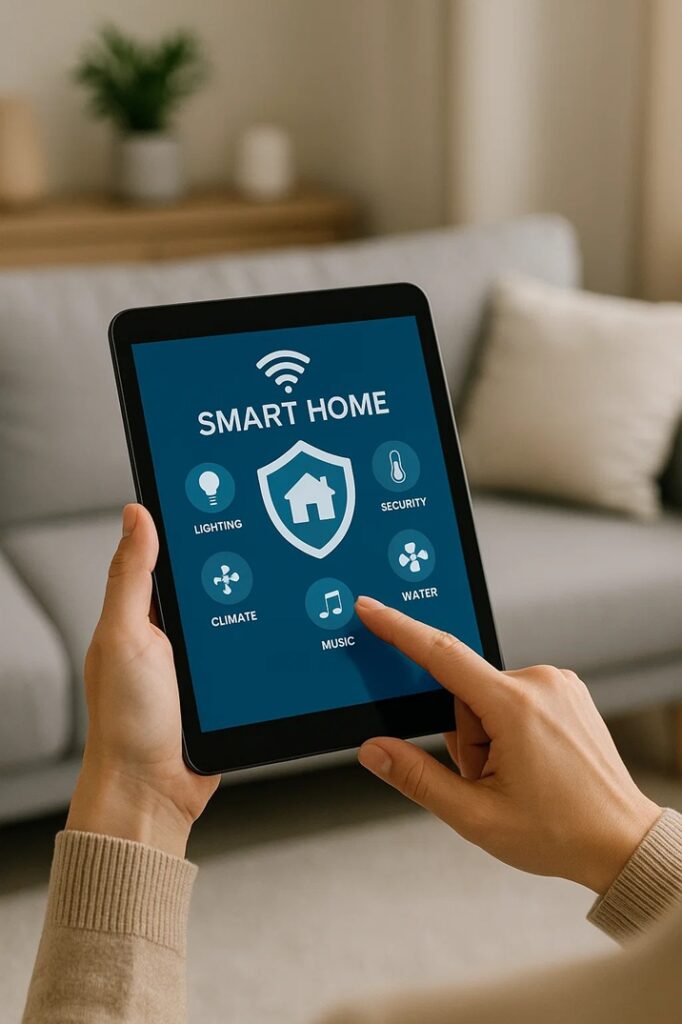
Leading the Smart Living Revolution
Both international and local companies are driving the adoption of smart home technology worldwide. Global brands like Aqara, Samsung SmartThings, and Google Nest are offering advanced smart home solutions including sensors, switches, automation hubs, and app-based controls. In Pakistan, the smart living ecosystem is also expanding rapidly. Local providers such as MTronic, Smart Innovations, and Okasha Smart offer complete solutions—from curtain motors to lighting control and mobile apps.
Notably, PTCL has collaborated with MTronic to bring smart automation to more homes (Click here for more details) , while ISPs like Transworld and Nayatel are also entering the smart home space with bundled connectivity and automation services. Together, these global and local efforts are making smart living more accessible, efficient, and future-ready. If you have any feedback or would like to share additional information, feel free to write to us at Editors@NetGlowz.com.
Frequently Asked Questions | FAQs
Q1: What does smart living mean?
Smart living refers to the use of automated and connected technology in your home to make everyday tasks easier, safer, and more energy-efficient.
Q2: How is smart living different from a traditional smart home?
While both terms are similar, smart living focuses more on the overall lifestyle benefits—such as comfort, convenience, and remote management—rather than just devices.
Q3: Can I start with just one smart device?
Yes, you can begin with a single smart bulb , switch, or curtain along with HUB and expand gradually as you become more comfortable with automation.
Q4: Is smart living expensive to set up?
Not necessarily. Many affordable home automation options exist, and you can build a system over time to suit your needs and budget.
Q5: Do smart living systems work in places with weak internet?
Yes. Most smart home systems are designed to function locally, so basic automations like turning lights on or adjusting fans can still operate without an internet connection. A stable internet connection is only necessary when you want to control devices remotely through a smartphone app.
Q6: Is smart living available in countries like Pakistan?
Definitely. In Pakistan, companies like MTronic, Smart Innovations, and Okasha Smart offer end-to-end services for smart home and connected lifestyle solutions

